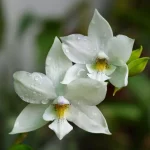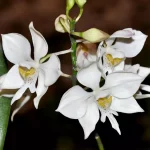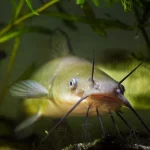Anhinga, also known as the “snakebird” due to its long, slender neck, is a bird commonly found near freshwater environments. Recognizable by their habit of spreading their wings wide to dry after diving for fish, these birds exhibit a range of fascinating behaviors that have inspired symbolic interpretations. Anhingas possess a blend of unique qualities that connect them with spiritual growth, transformation, adaptability, and a sense of mystery.
In this article, we will explore the Anhinga spiritual meaning, how these birds are viewed in different countries, what the colors of the Anhinga represent symbolically, the significance of Anhinga in dreams, and the myths and legends surrounding this captivating bird.
Anhinga Spiritual Meaning
The Anhinga’s distinctive behaviors and striking appearance give it profound symbolic meaning in spiritual contexts. Known for their ability to dive deep into water to catch fish, then emerging to dry their wings, Anhingas represent adaptability, transformation, and the balance between water and air elements.
Symbol of Transformation and Rebirth
One of the most prominent spiritual meanings of the Anhinga is its connection to transformation. The Anhinga spends significant time in water, diving deep to hunt for food. Water is often associated with emotions and the subconscious, making the bird’s diving behavior symbolic of a journey into the depths of the soul.
Upon emerging from the water, the Anhinga dries its wings in the sun, representing a cycle of renewal and rebirth. In spiritual terms, this behavior reflects the idea that personal growth and transformation require diving into one’s inner emotions, understanding them, and then emerging into a new state of awareness. The drying of their wings in the sunlight can also be seen as a metaphor for letting go of the past and stepping into clarity and enlightenment.
Adaptability and Survival
The Anhinga’s ability to thrive both in water and air symbolizes adaptability. Spiritually, this bird teaches the importance of being flexible and resilient in the face of challenges. Its seamless transitions between different environments reflect the human capacity to navigate life’s changing circumstances.
Anhingas remind us to remain calm and composed when diving into new opportunities or facing adversity. Their unique method of hunting—waiting patiently underwater—speaks to the value of patience and persistence in reaching one’s goals.
Balance of Water and Air Elements
In spiritual traditions, water often symbolizes the subconscious, emotions, and intuition, while air represents intellect, communication, and spirituality. The Anhinga’s constant movement between these two elements speaks to the need for balance in life. It encourages individuals to harmonize their emotional depths with intellectual clarity, achieving a state of holistic well-being.
The Anhinga’s ability to operate efficiently in both realms—water and air—serves as a reminder that we must not neglect either our emotional or intellectual sides, but instead, allow both to work in harmony.
Persistence and Stealth
As hunters, Anhingas are known for their stealth and patience. They dive beneath the surface of the water and remain submerged for long periods while waiting for the perfect moment to strike. This is spiritually symbolic of the power of patience, the ability to wait for the right opportunities before taking action.
The Anhinga’s persistence teaches us that success often requires time, effort, and the willingness to move forward slowly but steadily.
Anhinga Symbolism (In Different Countries)
Across different cultures, the Anhinga holds unique meanings based on the characteristics observed in their behavior and the environment they inhabit. Although not as globally known as some other birds, Anhingas carry special significance in regions where they are native.
Anhinga Symbolism in Native American Culture
In Native American traditions, birds that dwell near water often represent connection to the spirit world, and the Anhinga is no exception. Its association with water links it to emotions, the subconscious, and spiritual cleansing. The bird’s habit of diving deeply into the water symbolizes the journey into the depths of the soul and the exploration of hidden emotions or spiritual truths.
Some tribes believe that Anhingas act as guides to those seeking spiritual insight, teaching them how to balance their emotional and intellectual lives. In this context, the Anhinga represents a powerful guide for transformation and renewal, especially for individuals undergoing personal growth or spiritual awakening.
Anhinga Symbolism in South American Cultures
In South American countries, especially where Anhingas are common, such as Brazil and Argentina, the bird’s connection to water and its reliance on aquatic environments make it a symbol of resilience. Communities living near rivers and wetlands, where Anhingas thrive, often view the bird as a representation of survival and adaptability in challenging environments.
The ability of Anhingas to switch between hunting in water and flying through the air makes them a powerful symbol of dualism—the capacity to exist and succeed in two vastly different worlds. This is especially important in cultures that place value on balancing the natural world with human existence.
Anhinga Symbolism in Egyptian Mythology
In ancient Egyptian culture, birds were often seen as messengers between worlds, linking the human world with the divine. Although the Anhinga itself does not feature prominently in Egyptian mythology, its ability to move between elements—water and air—closely aligns with the symbolism of transcendence and transformation found in many Egyptian bird deities.
The Anhinga’s long neck resembles a snake, a form often associated with rebirth and eternal life in Egyptian mythology. Therefore, in this context, the bird can be interpreted as a symbol of eternal cycles and spiritual resurrection.
See Also: 35 Anhinga Quotes, Sayings, and Proverbs
Anhinga Symbolism (With Different Colors)
The color of an animal can greatly affect its symbolic meaning. Anhingas have a striking appearance, with dark plumage that gleams in the sun and a snake-like neck. While not as colorfully diverse as some species, the colors associated with Anhingas still hold significant meaning.
Black Anhinga
The most common Anhinga species have black feathers, often with iridescent hints when exposed to sunlight. Black is often associated with the mystery of the unknown, making the black Anhinga a symbol of hidden knowledge, depth of understanding, and the power of the subconscious mind.
In spiritual terms, black animals often represent the unknown aspects of life, and encountering a black Anhinga could signify the need to explore hidden or repressed emotions. This color represents the unconscious mind and the journey into the shadow self, encouraging individuals to confront their fears and accept all aspects of themselves, both light and dark.
Iridescent Feathers
When Anhinga feathers catch the light, they often show iridescent colors, symbolizing spiritual enlightenment and the journey toward higher consciousness. This shimmering effect mirrors the idea that wisdom and insight are gained after periods of introspection and personal exploration.
Iridescence also symbolizes the multifaceted nature of life and the idea that truth is not always one-dimensional. Like the bird’s feathers, life and spiritual growth reveal different aspects when viewed from different perspectives.
Anhinga Symbolize in Dreams
Dreaming of an Anhinga holds various meanings, often connected to transformation, emotional depth, and patience. The context of the dream and the behavior of the bird in it provide clues to the specific messages being conveyed.
Seeing an Anhinga in a Dream
If you see an Anhinga in your dream, it may represent a period of deep introspection or a call to explore your inner emotions. Since the Anhinga dives into water—often a symbol of the subconscious—its appearance in a dream could signify the need to confront emotions or feelings that have been submerged or ignored.
This dream may also indicate that you are entering a period of personal transformation. Just as the Anhinga rises from the water to dry its wings in the sun, your dream may suggest that you are moving through an emotional or spiritual journey and will soon emerge with new clarity or understanding.
Anhinga Diving in a Dream
An Anhinga diving into water in a dream symbolizes a journey into the depths of your subconscious mind. You may be on the verge of uncovering hidden emotions, memories, or truths that you have kept submerged. This can be an empowering dream, encouraging you to dive deeper into self-discovery.
At the same time, it may be a reminder to remain patient and observant in your personal or professional life. The Anhinga waits silently underwater before striking, suggesting that you should take your time to assess situations before making significant decisions.
Anhinga Drying Its Wings in a Dream
Dreaming of an Anhinga drying its wings in the sunlight represents renewal and spiritual clarity. This dream suggests that you are moving through a phase of growth and will soon achieve a sense of emotional or spiritual clarity. The act of drying its wings symbolizes letting go of burdens or emotional baggage and preparing to move forward with a sense of purpose and freedom.
The Myths and Legends About Anhinga
While the Anhinga is not as widely known as some mythological birds like the phoenix or eagle, there are still legends and myths associated with this fascinating creature, particularly in areas where they are commonly found.
Anhinga in Native American Legends
In Native American folklore, birds that dwell in water often hold significant spiritual meaning. The Anhinga, with its snake-like appearance and ability to dive deep, was sometimes associated with water spirits or creatures of the underworld. Its presence was believed to symbolize the arrival of spiritual messages or the need for personal introspection.
In some stories, the Anhinga served as a guide for shamans during vision quests, helping them to navigate the spiritual realms and offering wisdom through their ability to move seamlessly between the world of water (the subconscious) and air (the spiritual).
Anhinga in South American Mythology
In South American cultures, particularly those living near river systems, the Anhinga’s unique hunting style has made it a symbol of stealth and survival. Some legends describe the bird as a protector of wetlands, warning fishermen and villagers of approaching storms by the way it moves and behaves before a rainstorm.
In Brazilian folklore, Anhingas are said to possess mystical knowledge of the water and are believed to bring messages to those willing to sit in silence and observe their movements.
Modern Interpretations of the Anhinga
In modern spiritual practices, the Anhinga is often viewed as a symbol of spiritual balance and the integration of emotion and intellect. The bird’s distinct presence near bodies of water is associated with cleansing and renewal, while its wing-spreading behavior in the sunlight is a reminder of the power of letting go of emotional burdens and welcoming new energy into one’s life.
Conclusion
The Anhinga, with its elegant and mysterious nature, offers powerful spiritual insights. Its unique behaviors—diving deep into water, emerging to dry its wings, and its blend of serpent-like grace—imbue it with symbolism that touches on themes of transformation, balance, adaptability, and spiritual renewal. Whether seen in dreams, admired in nature, or interpreted through various cultural lenses, the Anhinga encourages us to explore the depths of our emotions, find harmony in our lives, and embrace the cycles of change with patience and perseverance.
Related topics:













